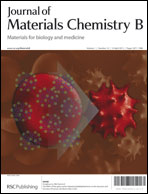Nanostructured titanium prepared by the equal-channel angular pressing route (ECAPed Ti) has shown great promise as an implant material over conventional pure titanium. The aim of this report is to investigate its biological properties, surface performance, and comprehensive biological effects at a molecular level when in contact with cells. Protein expression changes of human osteoblast-like MG-63 in response to polished ECAPed Ti had been profiled by employing stable isotope labelling with amino acids in cell culture (SILAC), using cpTi as control after the same polishing process. It was found that ubiquitin proteasome related processes were predominantly enriched in the over-expressed proteins. Superoxide dismutase 2 (SOD2) was apparently up-regulated on the ECAPed Ti surface, which could have contributed to the increase in SOD activity and the decrease in the reactive oxygen species (ROS) level. These expression changes have relationships with protein degradation, bone formation and resistance to oxidative injury, and they suggest that ECAPed Ti has the potential to further promote osteoblast differentiation. On the other hand, the down-regulated proteins exhibited resistance to platelet adhesion on the ECAPed Ti surface. This study reveals the differential expression of proteins in human osteoblasts induced by nanostructured titanium substrates for the first time.

You have access to this article
 Please wait while we load your content...
Something went wrong. Try again?
Please wait while we load your content...
Something went wrong. Try again?


 Please wait while we load your content...
Please wait while we load your content...